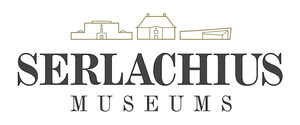Factory is Outside
April 1, 2017–April 1, 2018
Joenniementie 47
FI-35800 Mänttä
Finland
Hours: Monday–Sunday 10am–6pm
T +358 3 4886800
info@serlachius.fi
Esther Shalev-Gerz’s Factory is Outside will open on April 1, 2017 at the Serlachius Museums in Finland. Extensive in scale, the exhibition comprises four interweaving series of works that investigate how cultural identities are constructed and examine the role and status of traditional professions in a world that is global and undergoing a rapid digital transformation.
Paris-based Esther Shalev-Gerz (b. 1948) is known for her consistent investigations into memory, history, nature, democracy and the construction of cultural identities. She sets out to challenge conventional notions of art and artistic practice and considers how art may contribute to contemporary discourse on the politics of representation.
Shalev-Gerz’s art takes the form of an active dialogue with others; it is a process of consultation and negotiation that ensures that the individual and collective memories, stories, opinions and experiences of her participants are visible and indeed highlighted in her works. She is interested in the fluctuating nature of time and space, and the interrelationships between identities, places, history and narratives. Her art is a process of recording, critiquing and furthering our understanding of the social role and significance of artistic practice.
The themes of Shalev-Gerz’s exhibition are also relevant to the history of Mänttä, the small industrial town in Finland, where the exhibition is due to be held. For generations, the local mill has determined the structure and rhythm of everyday life here. Consequently, the dramatic decline of the traditional manufacturing industries has had a significant impact on the community.
In Sound Machine (2008), the looms at the textile factory have fallen silent and the workers recall their noisy working environment. The Last Click (2010–11) recounts the downfall of a highly-regarded camera factory and reveals the now empty workshops, demonstrating that, though photography may have shifted from analogue to digital, people’s affection for cameras very much remains.
Describing Labor (2012) focuses on depictions of work and labour in art. The artworks that appear in the photographs are from the Wolfsonian Institute in Miami, the largest art institution specialising in the history of labour. The artist created this work in consultation with the museum’s curators. In a video, they discuss their own personal relationship with the works they have chosen.
Dead Wood (2016), shot in an ancient woodland in central Europe, recalls a time before the arrival of the wood and paper industries. This poetic work is an excursion into the essence of the forest with four people who represent different branches.
The Serlachius family made paper and loved art
Gustaf Adolf Serlachius built his first ground wood mill in Mänttä, in the middle of a forest, 150 years ago. Gradually, the small town established itself as an important hub for the Finnish paper industry, led by the Serlachius company. Paper continues to be produced in Mänttä to this day, although the company now operates under a different name.
The Serlachius family loved art and created a fine arts foundation to protect their expanding art collection. The Gösta Serlachius Fine Arts Foundation continues this work and runs two highly-regarded museums in the area. The Factory is Outside exhibition will run 1 April 2017–1 April 2018 at Serlachius Museum Gustaf, the former head office of the Serlachius company, immediately adjacent to the paper mill. The exhibition is curated by independent writer and art critic Timo Valjakka.
For further information, please contact:
T +358 3 488 6800 / info [at] serlachius.fi

